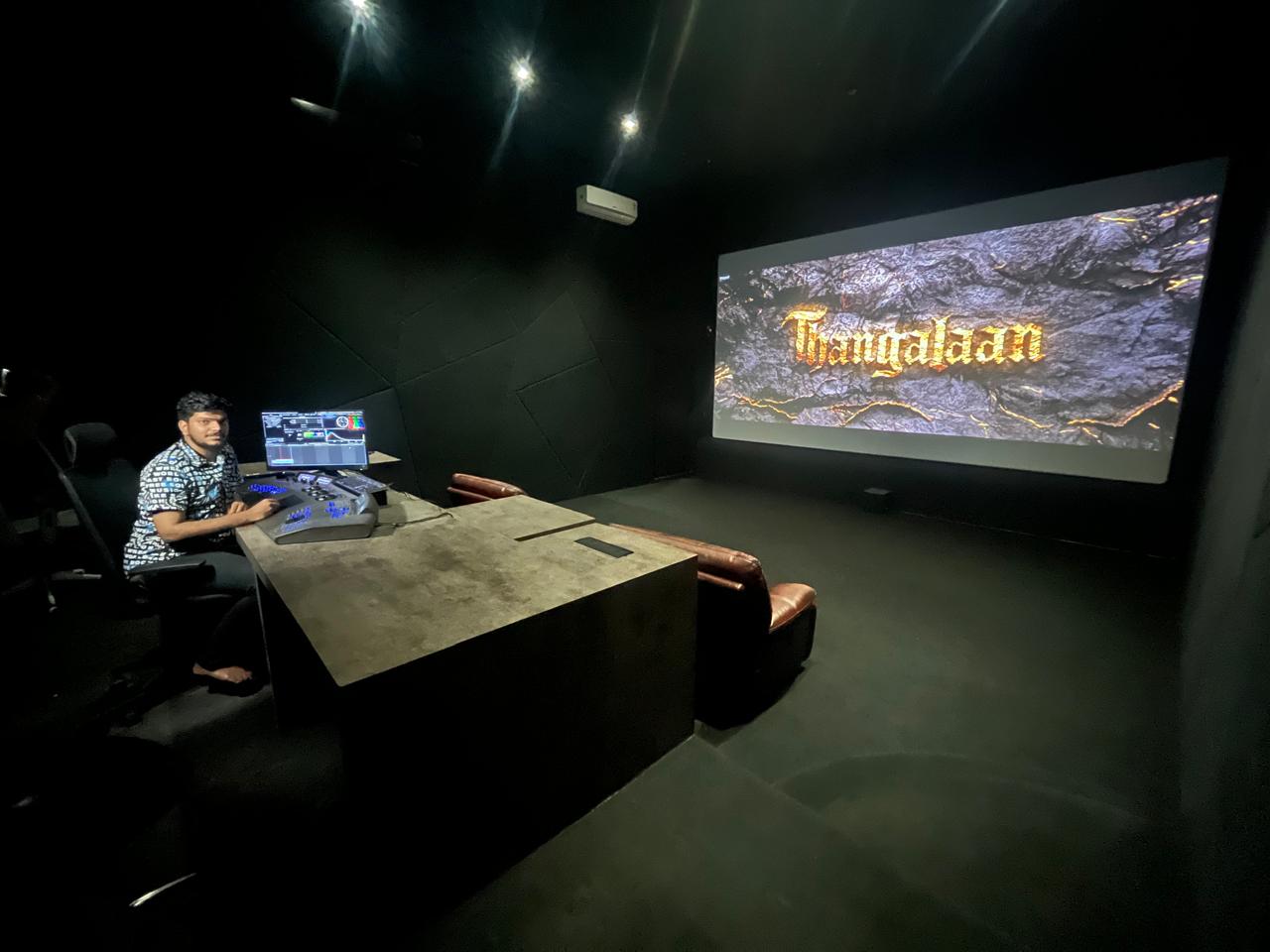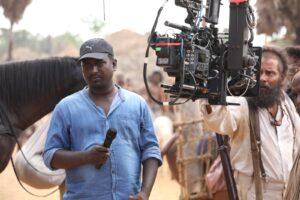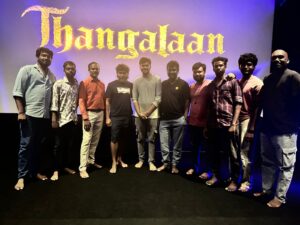
In conversation Colorist John Sriram: Thangalaan!
Aug 20 2024
Thangalaan was screened for SICA members recently cinematography of Kishor Kumar was widely appreciated.
During the screening SICA General Secretary Ilavarasu was curious to have Colorist voice.
Here Colorist John Sriram speaks about his journey as colorist.

Can you tell us about your journey into the world of color grading and how it all began?
My journey into color grading started during my time as a Viscom student. Initially, I developed an interest in editing short films, and it was during this period that I also got involved in color grading. As I explored further, I discovered that color grading was an integral role in filmmaking, distinct from editing, and that intrigued me deeply. This curiosity led me to Chennai, where I began working with professional colorists. My initial role was that of a conformist, where I would match the footage to ensure it was ready for grading. Over time, I transitioned into full-fledged color grading, which became my passion.

What were some of the challenges you faced as a conformist before moving into color grading?
One of the most challenging aspects of being a conformist is dealing with footage that comes from inexperienced editors who haven’t set the appropriate frame rates. In such cases, the footage has to be manually conformed, which can be time-consuming and tricky. Another challenge arises after conforming and grading a project—if there’s a re-edit, it can lead to confusion and require additional work to ensure everything matches up again.

You recently worked on the film Thangalaan as a colorist. How did this opportunity come about?
Thangalaan was my first major project as a colorist, and I owe this opportunity to Cinematographer Kishor Kumar. He visited my DI (Digital Intermediate) studio, and I requested him to let me grade a one-minute footage. He was impressed with the results and entrusted me with the color grading for the entire film, which was a fantastic opportunity for me.

What were some of the most important decisions and challenges you faced while grading Thangalaan?
One of the key decisions was to emulate a period look that the DoP and director envisioned. They wanted a soil tone similar to what was seen in *KGF*. We also needed to ensure the gold tones were perfect, which involved adding a little more brown to the skin tones and adjusting the green to create a warmer look.
A significant narrative challenge was the film’s shift between the real world and an illusionary one, especially towards the midway point. For the illusionary sequences, we created a deep orange look, with red tones on the skin and faces to differentiate it from the real-world scenes.
The film also had a lot of VFX shots, especially the symbolic mountain, which was entirely created in CGI. One of the highlights was the action sequences that intercut between day and night. Kishor Kumar shot these scenes with the same actors and compositions in both day and night settings. In post-production, we lifted the brightness for the day scenes and deepened the tones for the night scenes to create a striking difference while maintaining a seamless visual language.
What was your approach in terms of color space and workflow for this project?
For Thangalaan, I chose the ACES (Academy Color Encoding System) working color space, which was also used for VFX to ensure a perfect blend between the graded footage and CGI elements. I typically prefer working in SDR (Standard Dynamic Range) rather than HDR (High Dynamic Range), as HDR can be very fatiguing due to the high nit brightness values. However, I utilized the DOLBY Vision pipeline with SDR and DCI-P3 color spaces to lend more detail, especially in the highlight areas.
How do you find working with HDR compared to SDR, and what are the challenges?
Working in HDR mode is indeed challenging, particularly because of the eye fatigue it causes. You can only work for half the time you would normally work in SDR because of the intense brightness values involved. Moreover, HDR looks brilliant on HDR-supported TVs or monitors, but it can look quite different on other displays, which is a challenge in ensuring consistency across platforms.

Do you believe taking breaks during grading sessions improves the final output?
Absolutely. Most colorists grade continuously until the job is done, but I believe taking time breaks can lead to better results. When you step away and return, you see things differently, and there’s always room for improvement. With *Thangalaan*, even though I finished the grade early, the release date got pushed, allowing the DoP and me to revisit the footage. This extra time allowed us to see things in a new light and make some changes that enhanced the final product.
Any final thoughts for aspiring colorists?
I am also new but i can few on my experience is the role of a colorist is crucial in shaping the visual narrative of a film. It requires not just technical skill but also a deep understanding of the story and the DOP vision. My advice to aspiring colorists is to be patient, keep learning, and always be open to new techniques and technologies. The more you experiment and refine your skills, the more impactful your work will be.
Article by
CJ Rajkumar
Author/ Cinematographer
